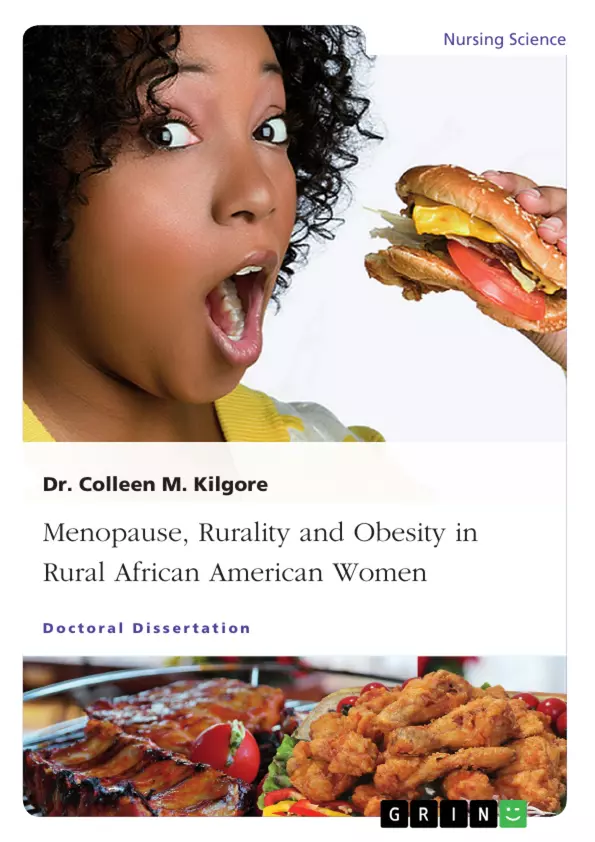In light of the present-day obesity crisis, this study describes the impact of demographic, cognitive, behavioral, and biological factors on health outcomes in pre-menopausal and menopausal African American women living in rural South Carolina.
The data suggests that obesity and related chronic diseases can be, in fact, curbed by a better-informed public, a shift in body-awareness and a deeper understanding of the sociocultural heritage and our relationship to food in general. As a groundbreaking study within this high-risk population, it also puts in perspective to what extent these factors are driven by the socioeconomic status of the women.
The findings from this research place renewed urgency on interactive strategies in education and the healthcare field in order to better equip African American women in rural areas with the tools to confront obesity and related chronic diseases.
Table of Contents
- Chapter 1: Introduction
- Statement of the Problem
- Purpose of the Study
- Research Questions
- Significance of the Study
- Assumptions
- Limitations
- Definition of Terms
- Chapter 2: Literature Review
- Menopause and its Impact
- Obesity and its Impact
- Rurality and its Impact
- African American Women's Health
- Chapter 3: Methodology
- Research Design
- Population and Sample
- Data Collection Procedures
- Data Analysis
- Chapter 4: Results
- Demographic Characteristics
- Menopausal Symptoms
- Obesity Prevalence
- Rurality Factors
- Chapter 5: Discussion
- Interpretation of Findings
- Implications for Practice
- Recommendations for Future Research
Objectives and Key Themes
This dissertation aims to investigate the interplay of menopause, rurality, and obesity among rural African American women. It explores the unique experiences and challenges faced by this population in the context of these three factors.
- The impact of menopause on the health and well-being of rural African American women.
- The prevalence of obesity among rural African American women and its contributing factors.
- The role of rurality in shaping the health experiences of African American women, particularly during menopause.
- The influence of cultural factors on the health of rural African American women.
- The implications of these findings for improving health care services and interventions for this underserved population.
Chapter Summaries
Chapter 1 introduces the research problem, outlining the need for a comprehensive understanding of the intersection of menopause, rurality, and obesity in rural African American women. The purpose, research questions, significance, assumptions, limitations, and definition of key terms are also presented.
Chapter 2 provides a comprehensive review of existing literature on menopause, obesity, rurality, and the health of African American women. It explores the unique challenges faced by this population and highlights the need for culturally sensitive interventions.
Chapter 3 details the research methodology, including the study design, population and sample, data collection procedures, and data analysis techniques. The chapter outlines the methods used to gather and analyze information related to the research questions.
Chapter 4 presents the findings of the study, focusing on the demographic characteristics of the participants, the prevalence of menopausal symptoms and obesity, and the influence of rurality factors on their health.
Keywords
This dissertation focuses on the complex interplay of menopause, rurality, and obesity in the context of African American women's health. Key terms and concepts include: menopause, rurality, obesity, African American women, health disparities, cultural factors, health care services, and interventions.
- Citation du texte
- Colleen M. Kilgore (Auteur), 2014, Menopause, Rurality and Obesity in Rural African American Women, Munich, GRIN Verlag, https://www.grin.com/document/322092



